TWA’s name change ushered in an era of transatlantic glamour
On 17 May 1950, Transcontinental & Western Air underwent a corporate name change. Keeping the initials TWA, the company adopted the powerful yet elegant moniker Trans World Airlines. This new corporate name and its initials would become recognized and respected around the world for excellent service.
It was also inextricably linked to its primary stockholder, the enigmatic Howard Hughes, who technically owned 78% of the company. Hughes controlled things at TWA behind the scenes, particularly the number and types of aircraft the airline purchased.
TWA had been referring to itself unofficially as the “Trans World Airline” since 1946, when scheduled service was inaugurated across the North Atlantic to Paris.

In the spring of 1950, TWA was operating a fleet of 41 Lockheed Constellations (models L-049 and L-749, with the first of the new 749As coming online), 16 unpressurized Douglas DC-4s, 62 unpressurized DC-3s, and 5 Boeing 307 Stratoliners.
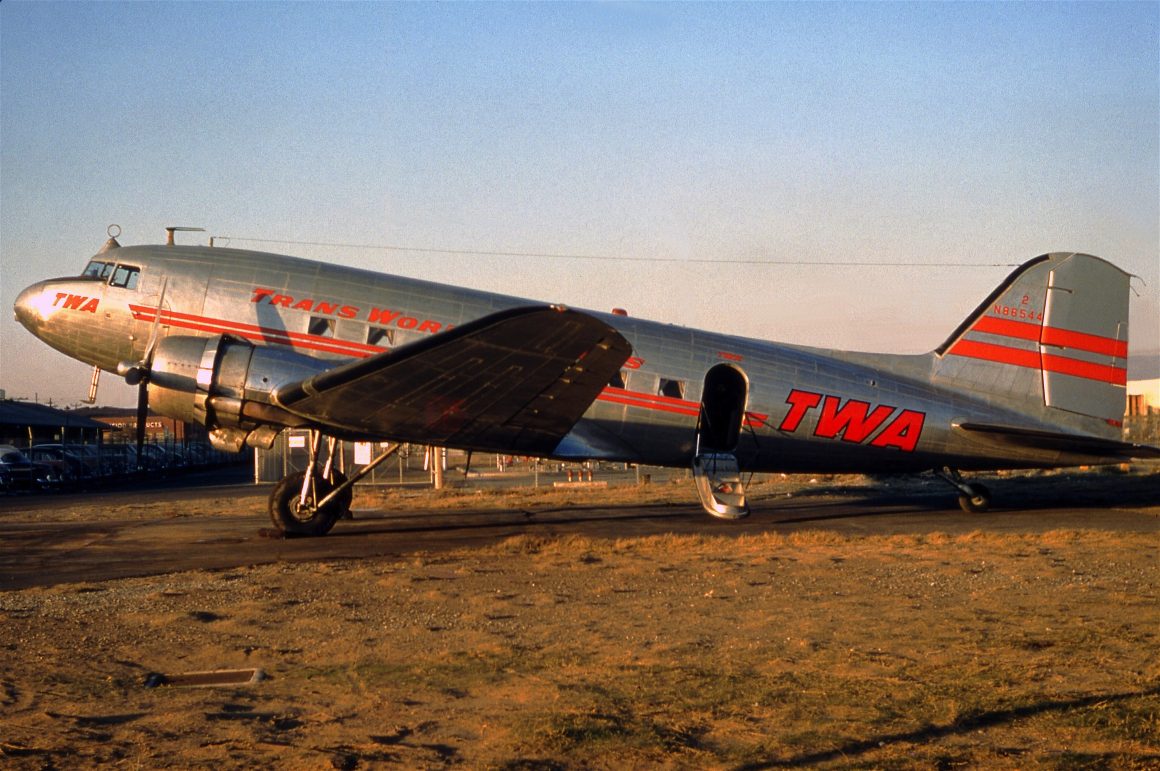
THE MARTINS
To replace DC-3s on TWA’s short-haul routes, Hughes turned his attention to the Glenn L. Martin Company, which was offering to build a 40-passenger, pressurized airliner to be called the Martin 404. Eastern Air Lines (EAL) ordered sixty of the new ships, and TWA requested forty.
While waiting for delivery of the 404s, TWA leased twelve unpressurized, 36-passenger Martin 202As from the manufacturer as a stopgap measure. The 202As performed so well for TWA that the company exercised its option to purchase them in addition to the forty 404s. TWA referred to its 52 Martins (unpressurized 202As and pressurized 404s) as “Martin Skyliners”. TWA operated its first scheduled Martin 202A service on 1 September 1950, and its first Martin 404 scheduled flight on 15 January 1952.

THE CONNIES
It was Lockheed’s Constellations that would become so closely associated with Trans World Airlines. The distinctive triple-tailed, pressurized Connies would become synonymous with TWA throughout the 1950s as Hughes considered purchasing each subsequent upgrade of the type.
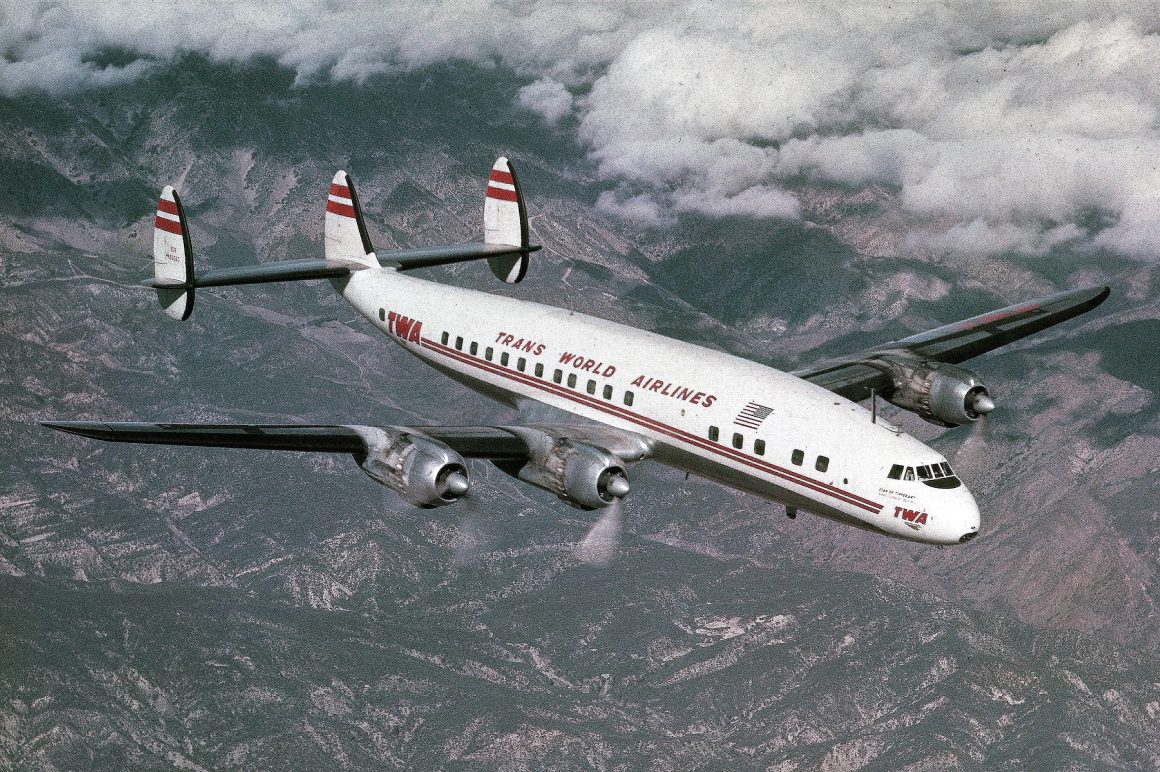
With each new offering from Douglas, its primary competitor, Lockheed would create a stretched, more powerful, more luxurious version of its Constellation series. The L-1049 Super Constellation was Lockheed’s answer to the DC-7.
It was with an L-1049 that TWA offered the first scheduled non-stop transcontinental service in the USA (eastbound, with cooperating winds) on 19 October 1953, just over a month ahead of American Airlines’ introduction of DC-7s on the same route (Los Angeles – New York).

The next advance was a Constellation that could ensure non-stop coast-to-coast operation in either direction without the need for a fuel stop, regardless of weather conditions or headwinds. Christened the L-1049G, the “Super G” became the most popular version of the tri-tailed airliner ever produced. It entered service with TWA in the spring of 1955.
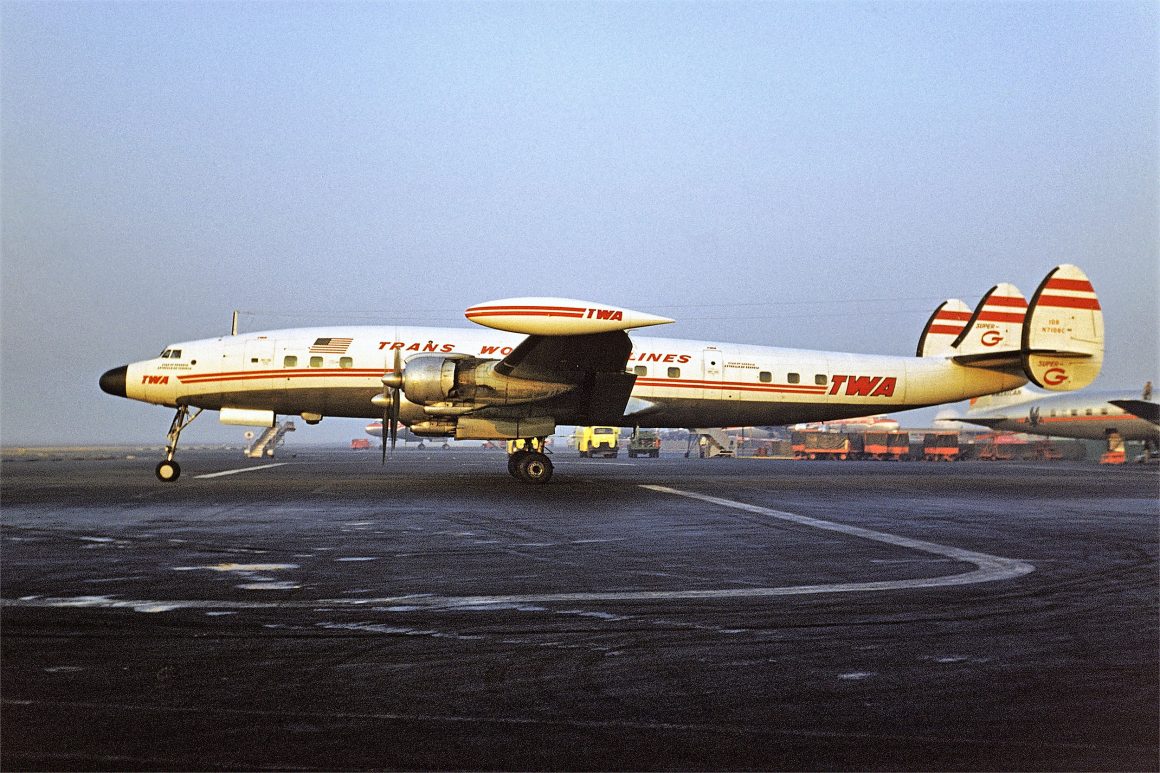
FLY THE FINEST: Fly TWA
The slogan, “Fly the Finest… Fly TWA”, was introduced in 1953. This simple motto was repeated in television, radio, and print ads until it became familiar to virtually everyone. The general public believed that there was nothing finer than flying TWA.
And fly they did: More than three million passengers took to the skies with TWA in 1954. That figure increased yearly until 5,130,000 passengers “flew the finest” in 1959.
TWA was one of the four largest domestic airlines in the USA, along with American, United, and Eastern. Known as the Big Four, they outshone all other domestic carriers in terms of passenger revenue and passenger miles flown. TWA posted a profit each year between 1949 and 1955. After two years of losses, profitability returned in 1958 and ’59.
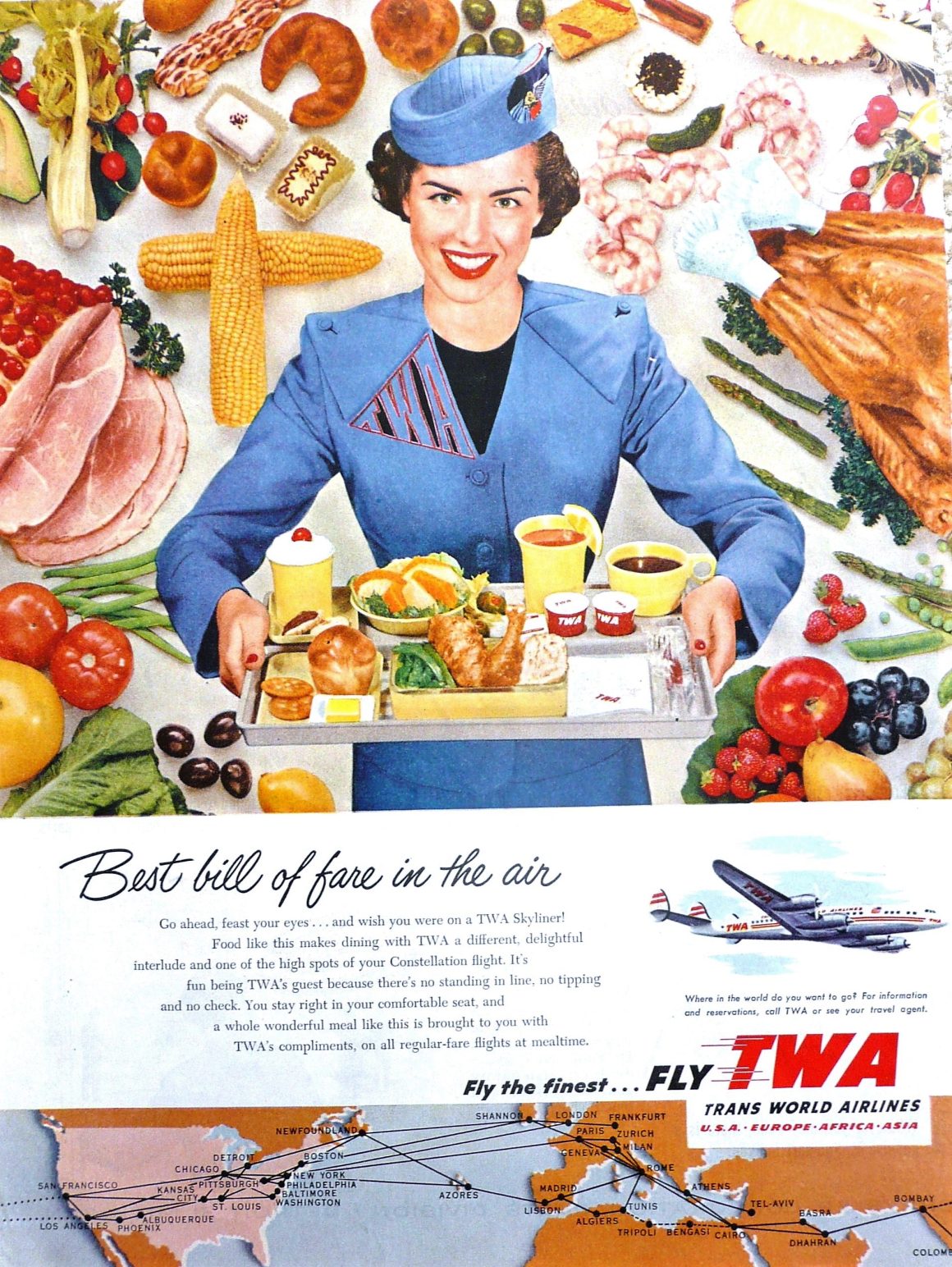
BEHIND THE SCENES
The difficulty of running an airline with an owner who insisted on calling the shots, even though he was often unreachable, was proving to be a stressful endeavor. Ralph Damon had been TWA’s president since 1949. He was able to work with Hughes and took the owner’s idiosyncrasies in stride. Unfortunately, Damon suffered an untimely death after dedicating a big neon TWA billboard in New York’s Times Square while enduring windy, frigid winter weather in late 1955. He passed away from pneumonia on 4 January 1956.
TWA remained without a president until a year later, when Carter Burgess assumed the office on 23 January 1957. Burgess could not work with Hughes and lasted less than a year, resigning on 31 December 1957. Charles S. Thomas was next. He began his term on 2 July 1958, lasting two years until July 1960.
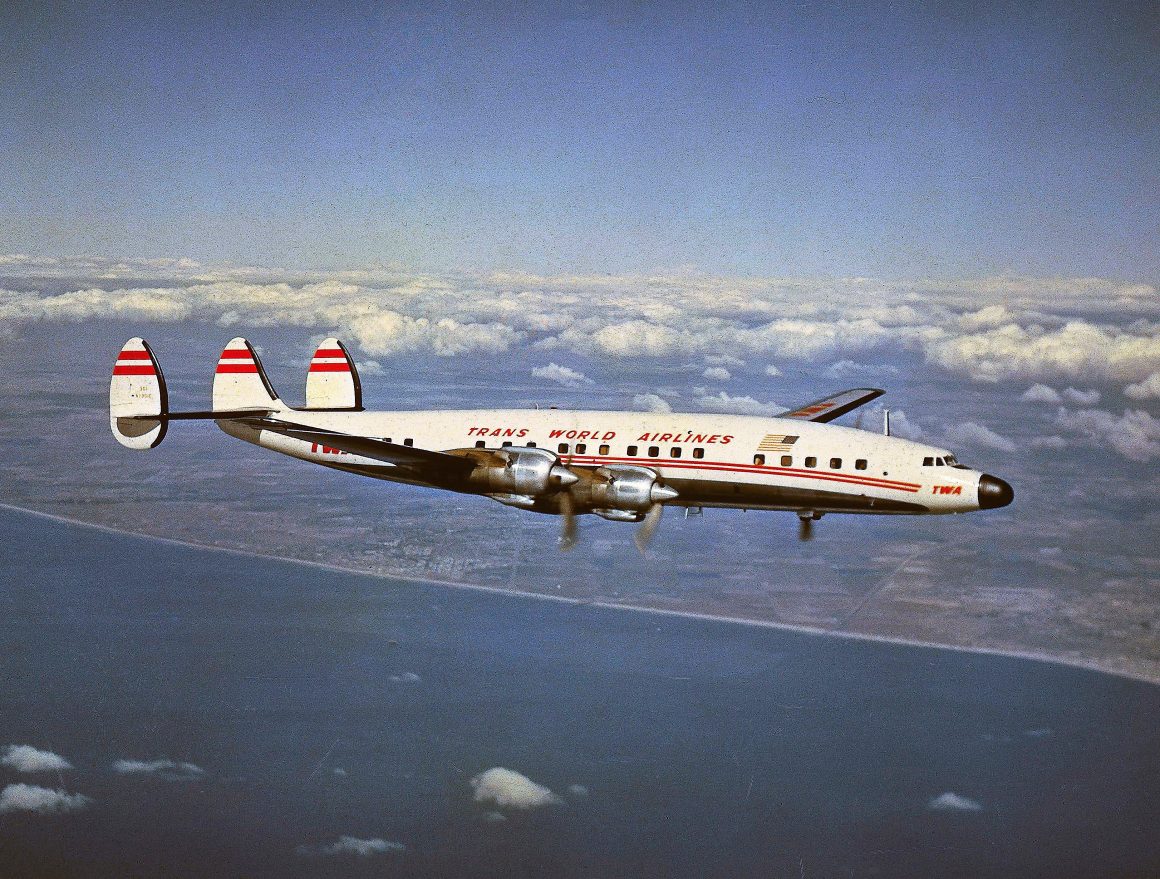
JETSTREAMS
Hughes decided to buy the ultimate version of his much-loved Constellation, the L-1649A Starliner, which TWA would call the Jetstream. Twenty-five Jetstreams were ordered, and they entered service with TWA in the spring of 1957. In October of that year, the Jetstreams were outfitted with fully reclining “Siesta seats.” Even though they were not money-makers, they were the last of the big piston-engine airliners, offering luxurious accommodations in flight across the US and the Atlantic in the short period before the dawn of the jet age.
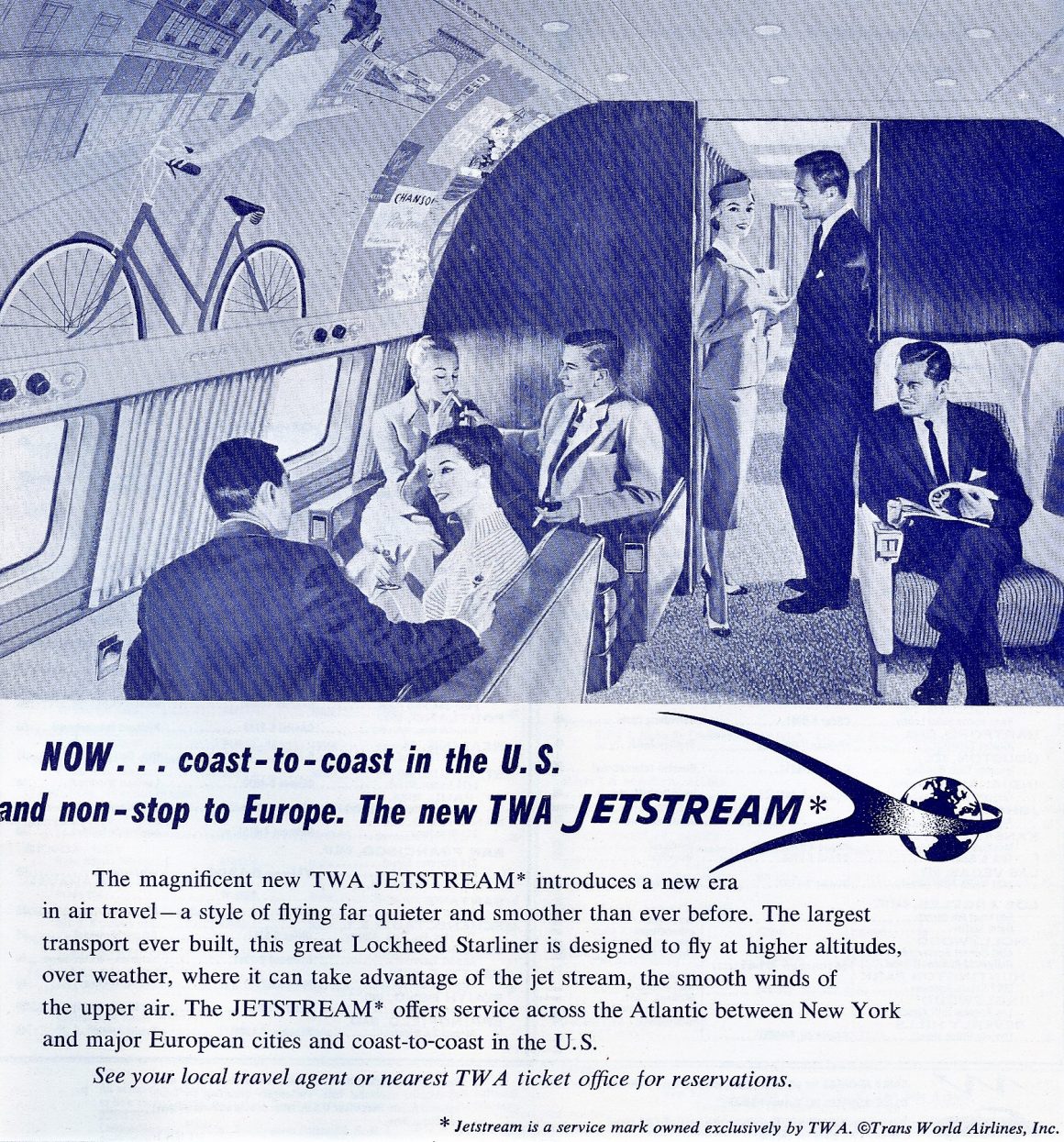
On 2 October 1957, TWA inaugurated trans-polar service from the West Coast (Los Angeles and San Francisco) direct to London and Paris using Jetstreams. On the other side of the globe, in January 1958, TWA inaugurated service to Bangkok and Manila with Super-G Constellations as an extension of the company’s route from Europe, the Middle East, and India.

INTO THE JET AGE
The company’s first pure-jet service was operated by a Boeing 707-131 on 20 March 1959, between San Francisco and New York (Idlewild – now JFK). Eight months later, on 23 November 1959, TWA inaugurated international jet service with a Boeing 707-331 operating from New York to London and Frankfurt.
TWA entered the 1960s ready to tackle the jet age head-on and, on the surface, all seemed well. But there was turbulence on the horizon for Howard Hughes. The first years of the new decade would find him embroiled in litigation with TWA’s management and the airline’s other lenders. He was also in hot water with the Civil Aeronautics Board.
The slogan inviting the public to “Fly the Finest” was dropped as the 1950s came to a close. But TWA would survive!
